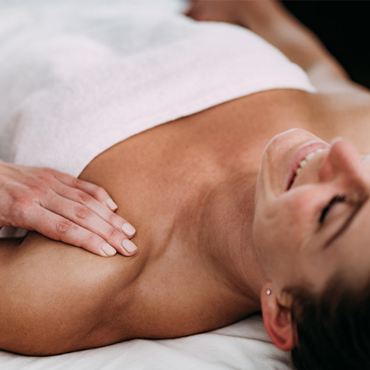We know exercise is good for our body but knowing something and acting on it can be two very different things. How can we learn to love exercise, or at least to accept it into our daily lives?
More than half (55 per cent) of all Australian adults don’t get the recommended amount of exercise for good health.
With work, commuting, juggling parenting and busy lifestyles — many of us would prefer to do something else than another task that feels like more work. The idea of sweating it out at the gym or pounding the pavement just doesn’t always appeal and we don’t have to look far to find an excuse to opt out.
What’s clear is that we don’t need another lecture about the importance of exercise (we know how good it is for us, right?!). For some, exercise has become loaded with guilt and failure and the ongoing pressure to add more to an already swamped to-do list.
When we’re already overwhelmed, it’s even more overwhelming to fit it in. However, exercise and movement don’t have to be complicated. It is about energising yourself, and it can be as simple as breathing and stretching.
Rather than resorting to exercise goals that feel overwhelming, start with smaller achievable goals.
How much exercise do we need?
According to government health guidelines, we need to be active every day for good health, including our mental health.
Along with moderate exercise (such as walking, playing golf, lawn-mowing and swimming), our bodies need to get a more intense aerobic workout that gets our heart and circulation pumping. This includes faster pace activities like jogging, spin cycling or high intensity training.
At the very least, 2.5 hours of moderate physical activity or 1.25 hours of vigorous exercise — or a combination of the two — is recommended each week. Ideally, double that amount is recommended. Basically, the more exercise you do, the better.
Weaving it, not squeezing it, into your everyday life
Instead of thinking of exercise as a two-block period, break it up into small, achievable chunks of 10-minute bursts throughout the day. Stretch at home on the floor between other tasks and take advantage of exercise apps.
Activities we regularly do but that we don’t commonly label as workouts are the easiest way to weave exercise into the flow of our daily lives.
For older people, it may be choosing to stay independent, such as doing the housework, gardening, mowing the lawn and walking the dog. For busy parents, it might be playing with their kids at the park.
It’s about looking for opportunities in daily life to tweak what we do to maximise movement. All these small bouts of physical activity add up. We don’t have to make big changes at once, small changes can make a big difference.
Build habits, don’t rely on motivation
Motivation isn’t enough to make us more active, the brain will always take the path of least resistance. We have to rely on discipline and habits.
Whether it’s a daily walk with a friend or a weekly yoga session, the following are ways to make an exercise habit.
- Set an intention. Decide what you want to achieve and be specific. For example, set an intention to go for a 30-minute walk on Monday, Wednesday and Friday.
- Diarise it. Plan and time-block it into your diary as you would for work, birthdays and appointments.
- Empower your intention with language. Create language (and thoughts) that support your intention. Instead of saying “I might try to exercise this week”, try saying “I’m going to exercise on Monday”.
- Temptation bundle make it fun. If you don’t like the idea of exercise, combine it with something you do enjoy. For example, ending your exercise with a visit to the coffee shop as a reward, listening to music while you’re on an exercise bike, exercising while catching up with a friend or while surrounded by beautiful scenery. Associate something you don’t like with something you do like. When we make things fun, we are more likely to do it.
- Make it easy and start small. Overcommitting to more than you can do comfortably is counterproductive. Instead of saying, ‘I’m going to go every day’, limit yourself to three days this week. On the day, if you’re really not feeling like it, you can set yourself a 20-minute goal. Go for 20 minutes; you’re likely to go a bit longer.
- Make it obvious. Encourage the habit with reminders and make the habit accessible, such as leaving your gym clothes, walking shoes or yoga mat out and ready to go. Remember, out of sight, out of mind.
- Create a contract. Make a contract with yourself that outlines your goal and share it with someone, such as a partner or friend. Build consequences and rewards into it.
- Enlist a helper. Don’t expect to solve everything on your own. If a health condition or injuries are holding you back from the benefits of physical activity, see a professional who can help you create a program that works for you. If emotional problems like depression are holding you back, get help from a psychologist. If you don’t know what to do, a personal trainer can help, or you can try teaming up with a buddy.
- Set up a supportive environment. If you’re doing your exercise at home, setting up an inspiring space is important. Little things like diffusing uplifting essential oils or playing songs that you love. These things can bring back happy memories, increase our happiness hormones and encourage any exercise practice at home.
The right exercise for you
When we’re burnt out and tired, the last thing we want to do is exercise. Check in with your nervous system. Do you feel like you’re running on adrenaline? If so, you could be heading for adrenal fatigue so start with gentle exercises like some daily stretching, yoga or short walks.
For others who are just feeling sluggish from a sedentary lifestyle, a regular short run or cycle might work best to rejuvenate us.
Because we’ve also all got unique body types and needs, it’s about choosing the best option that makes exercise work for you. For some, a high-intensity CrossFit is good for their body; for others, gentler exercises like yoga or Pilates are more appropriate. Those who feel intimidated by group activities might prefer doing virtual classes in the comfort of their home.
Finding meaningful movement
To some of us, bouncing up and down in a gym or doing aimless laps of the block may lack meaning. For others that’s a type of meditation; a way of clearing the head and restoring energy levels.
Try to narrow down what’s important and meaningful to you. Connect what your purpose is to a movement. If you’re just doing exercise for the sake of it, it’s hard to keep going.
For instance, seeing how those yoga stretches might ease the pain in your back and improve your moods. Perhaps a virtual or group dance class makes you feel young again & reconnects you with songs you used to love. Boxing or self-defence classes might have meaning through the self-confidence and empowerment they bring.
These tips may help change your relationship with exercise. Hopefully instead of resistance and guilt, you can learn to love the benefits it brings. The hardest part is always the first step, so don’t overthink it. Keep your goals achievable and your sessions small and get out there and do it!














 North Perth
North Perth 


















